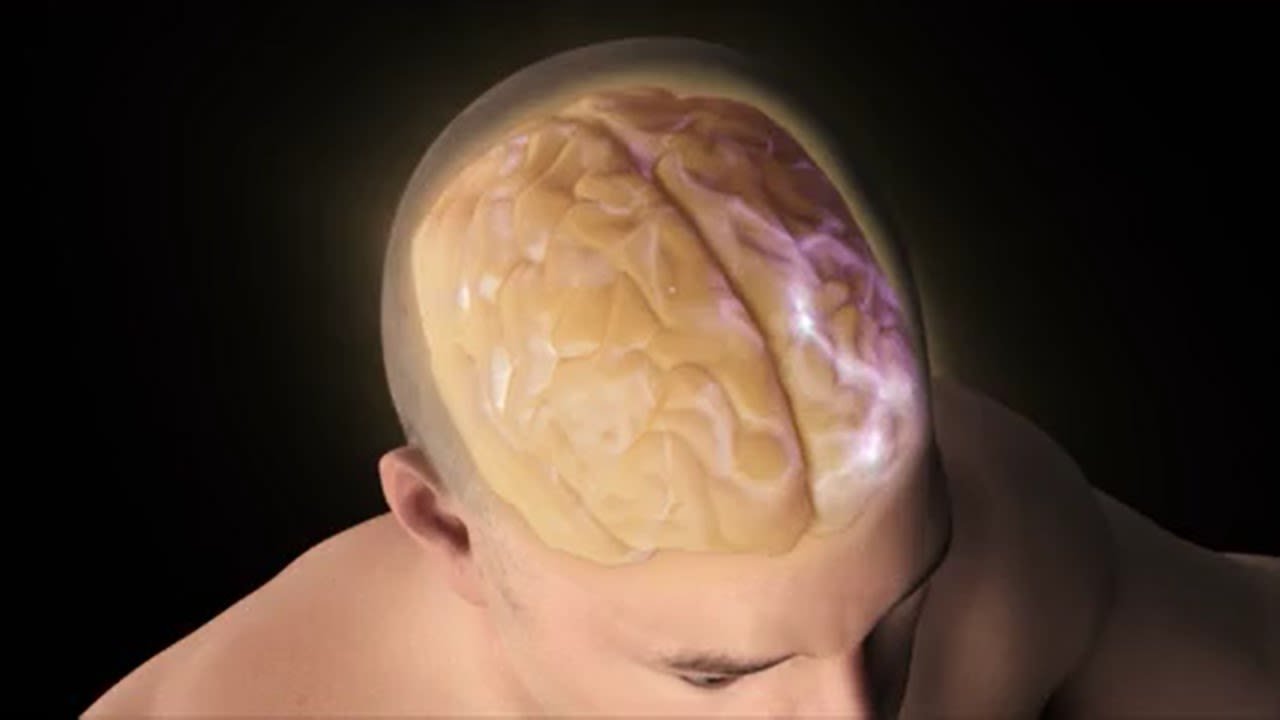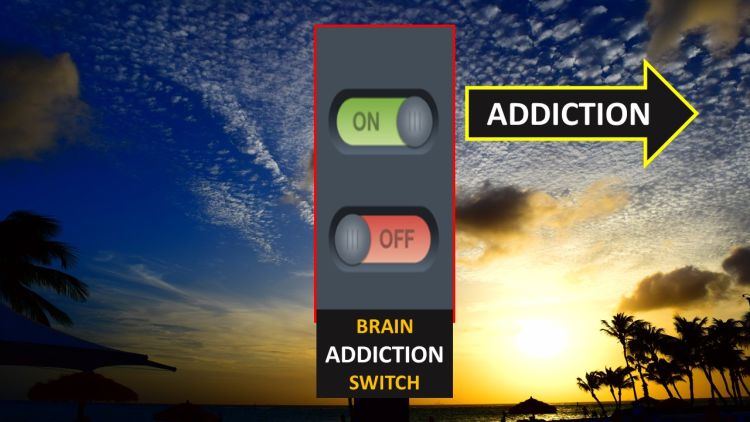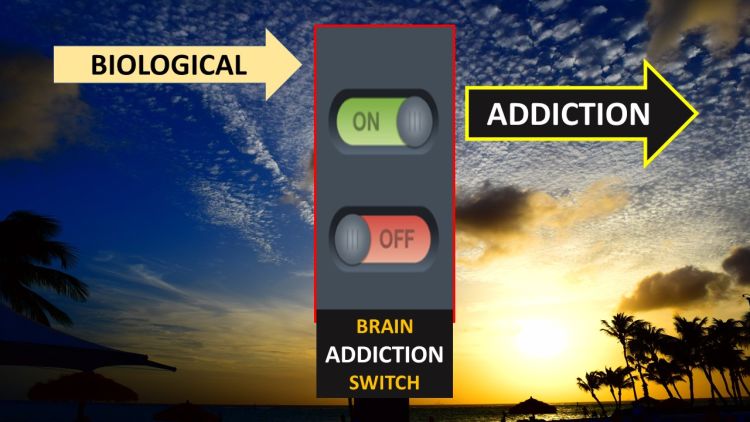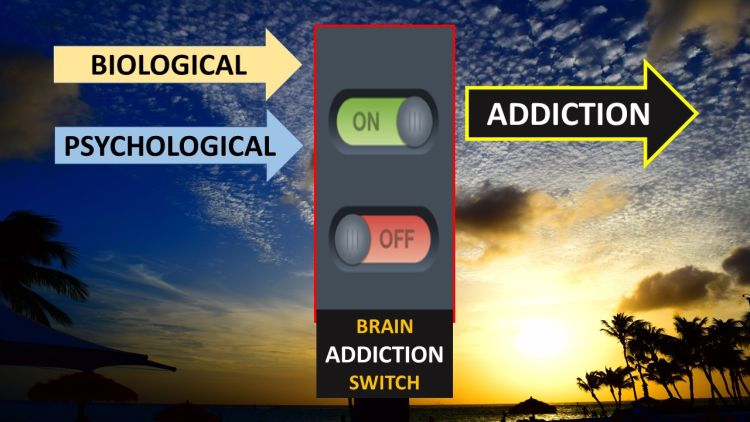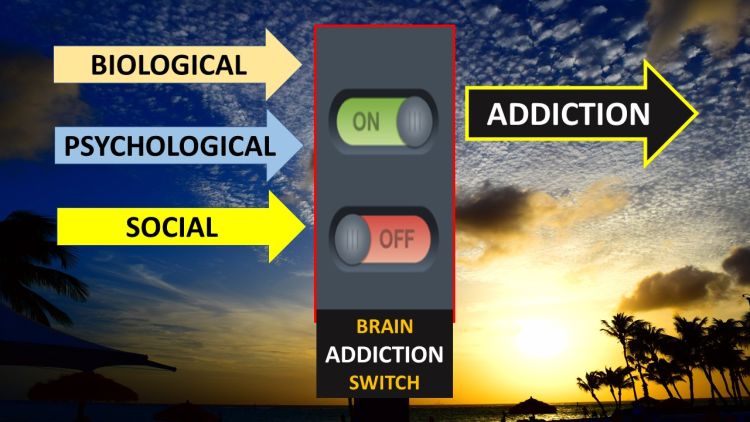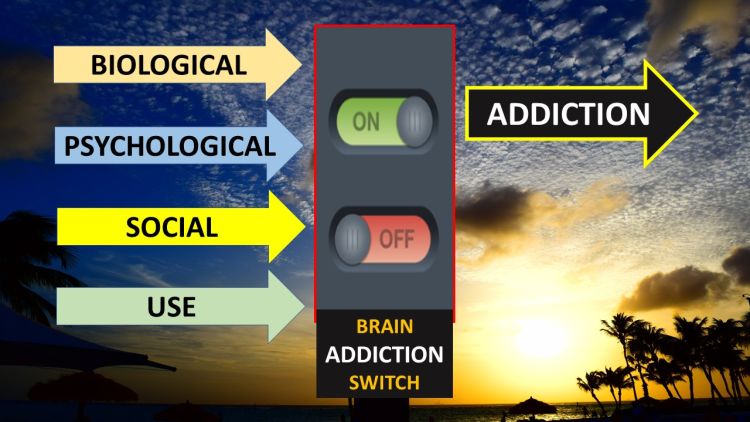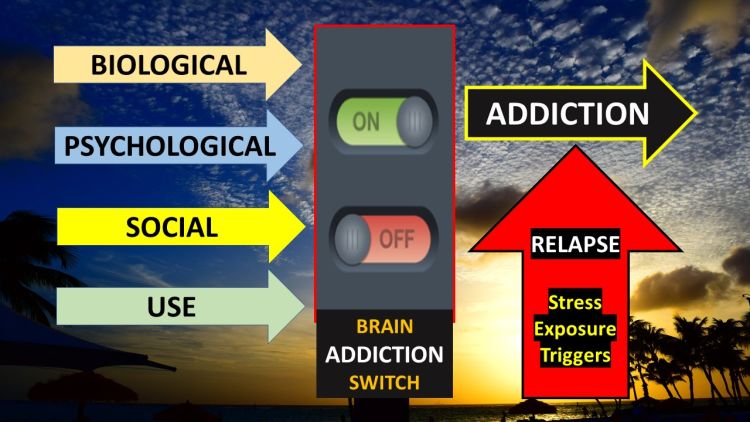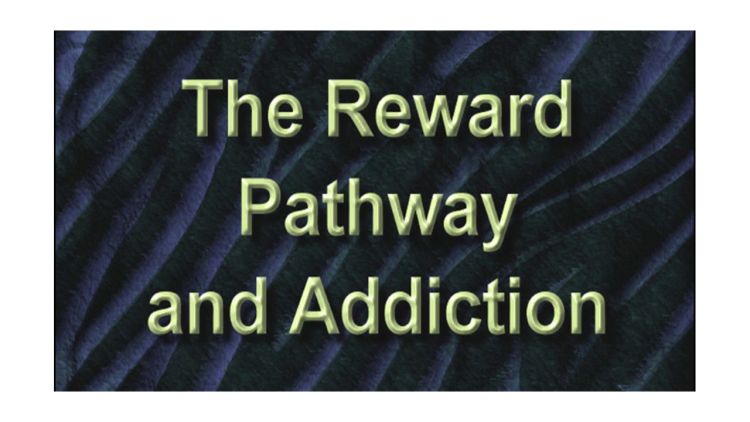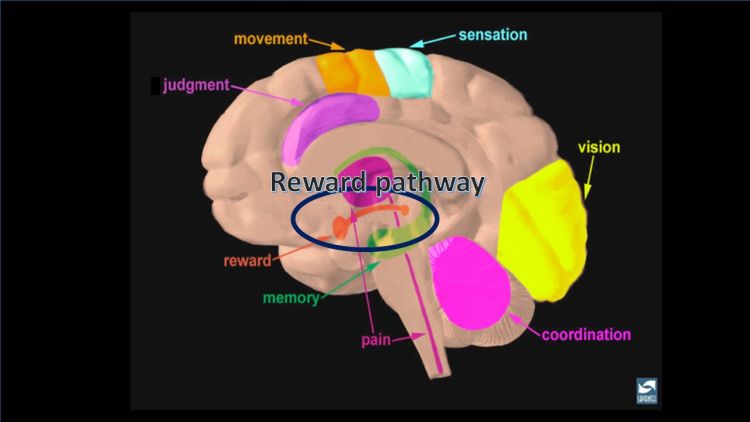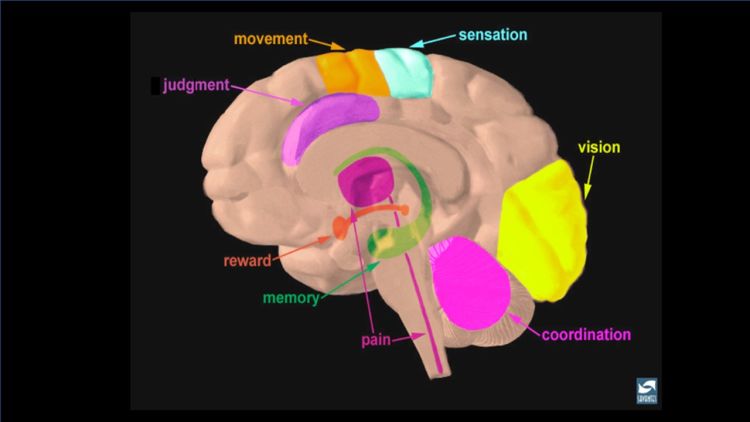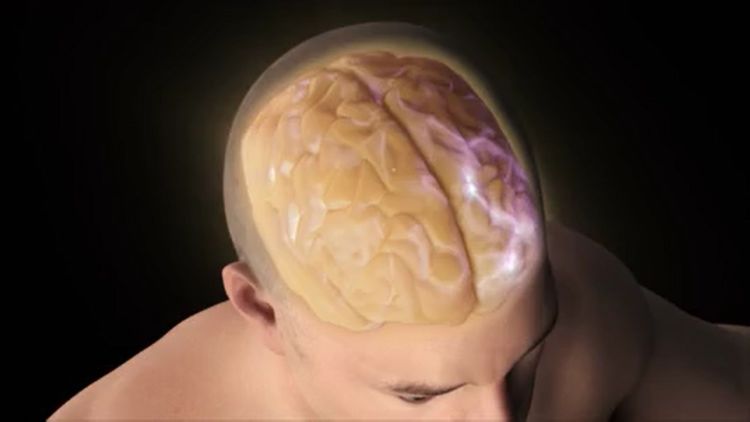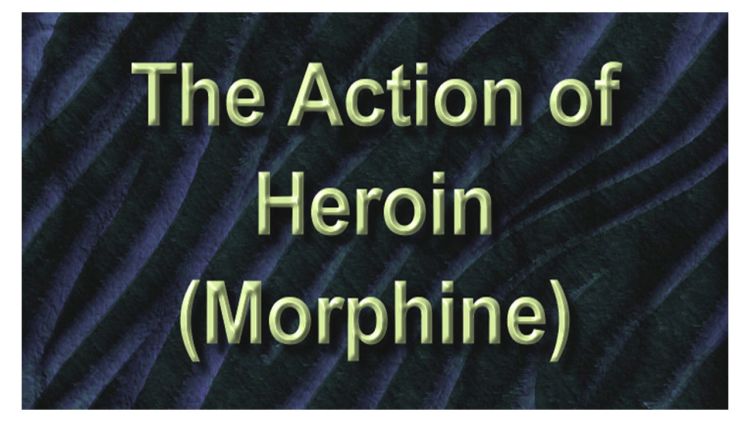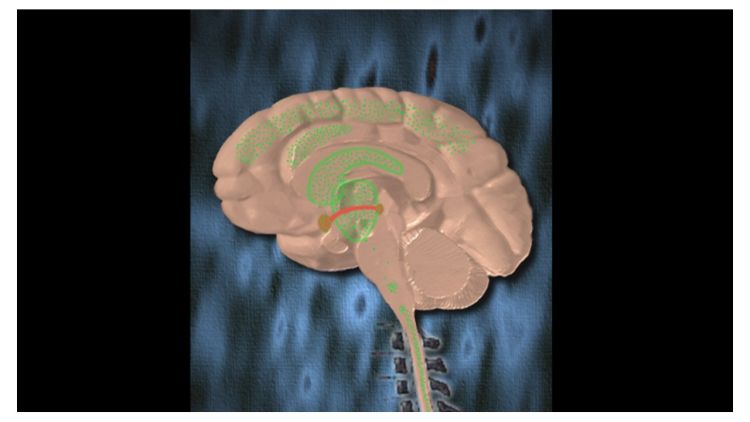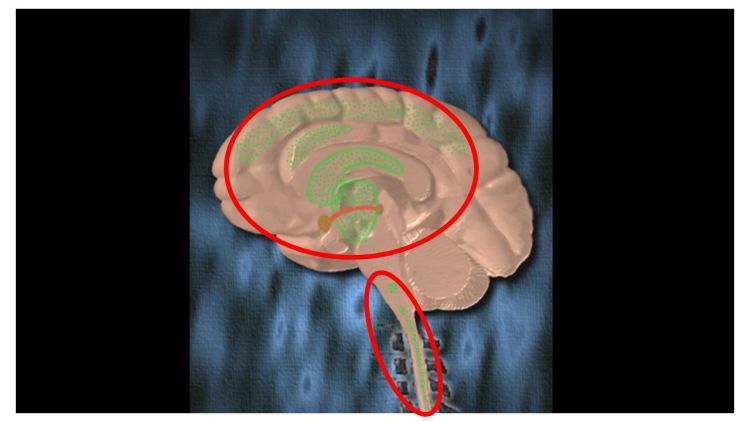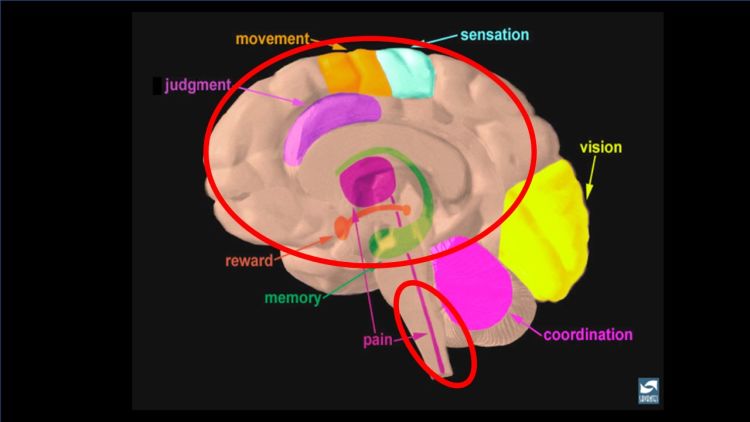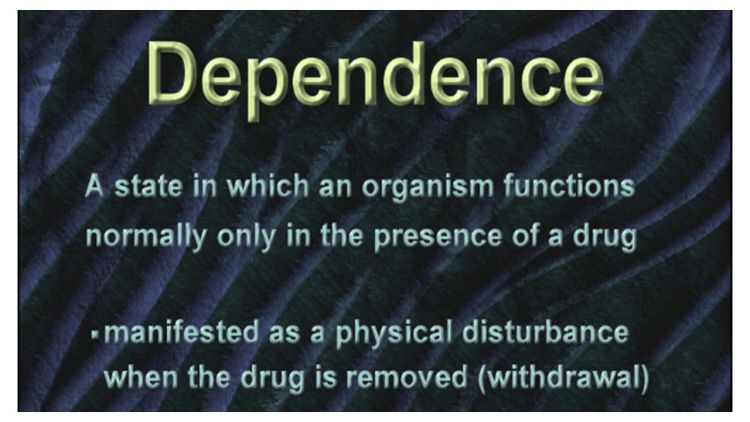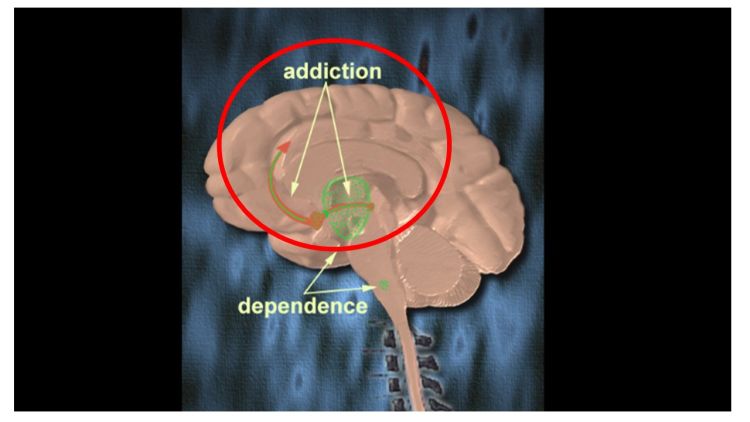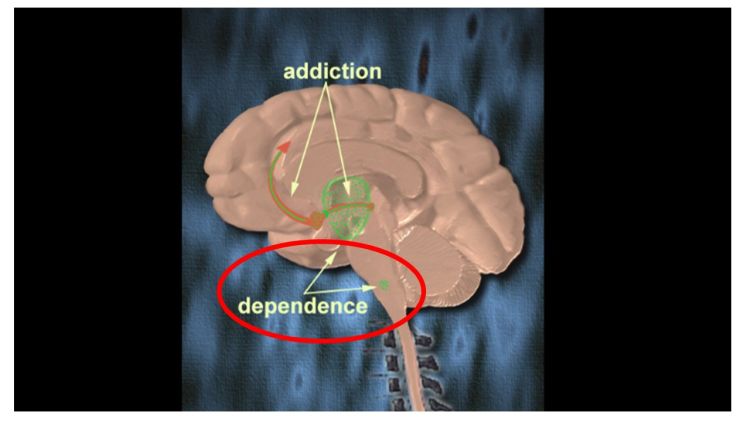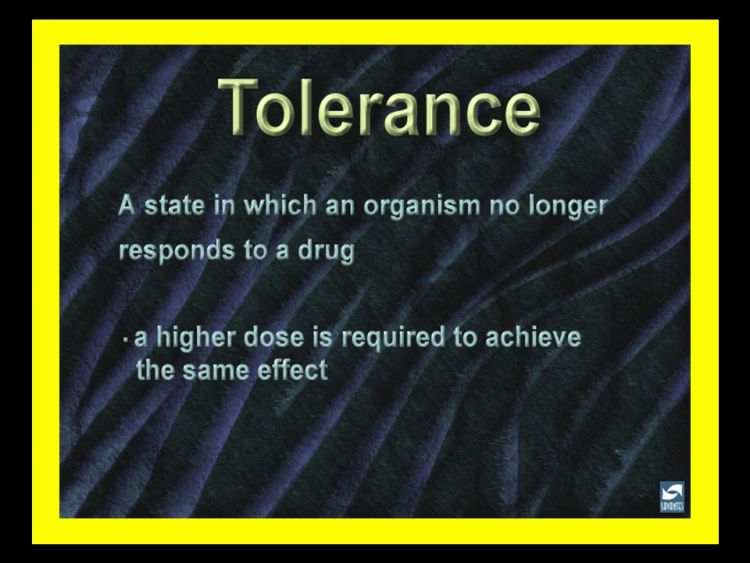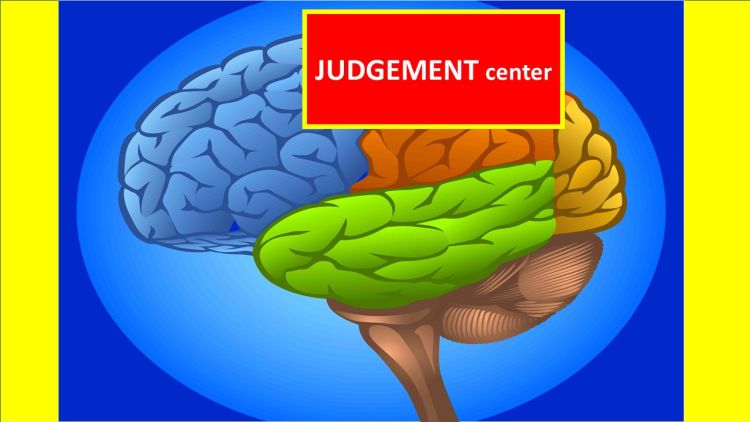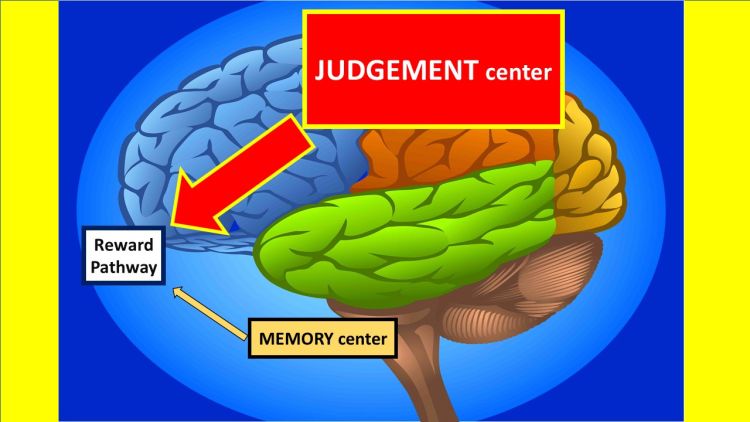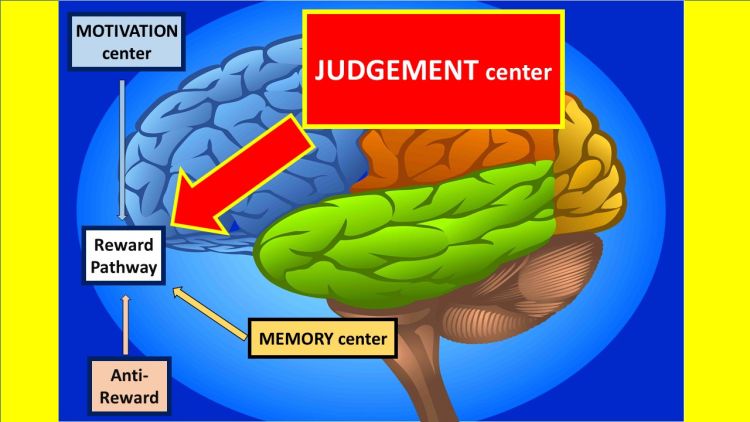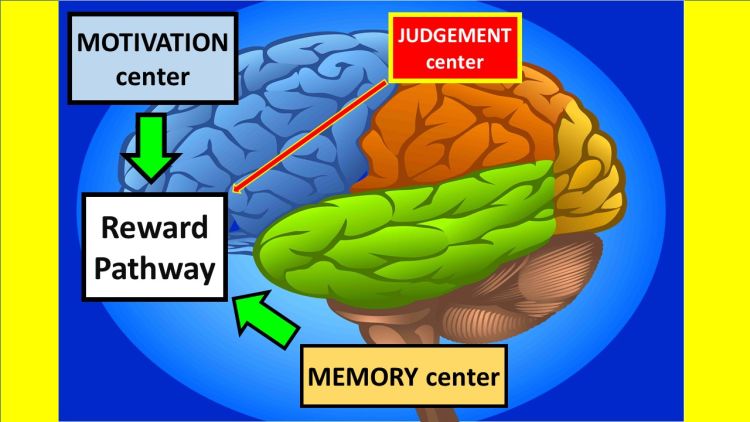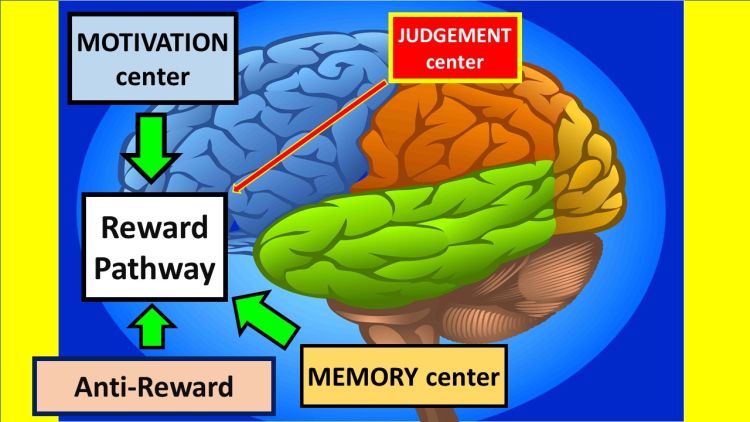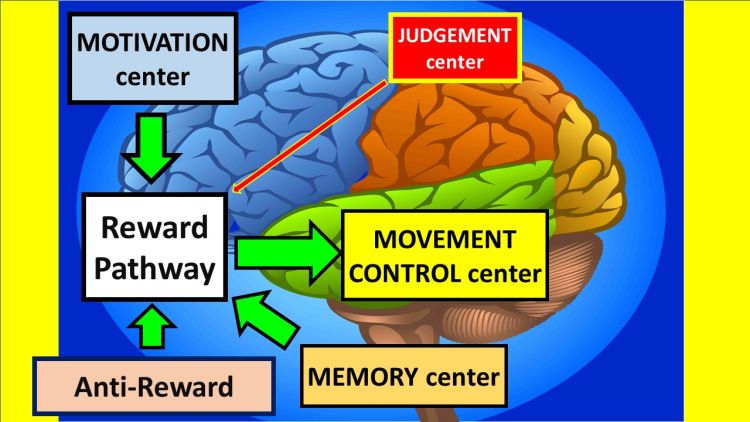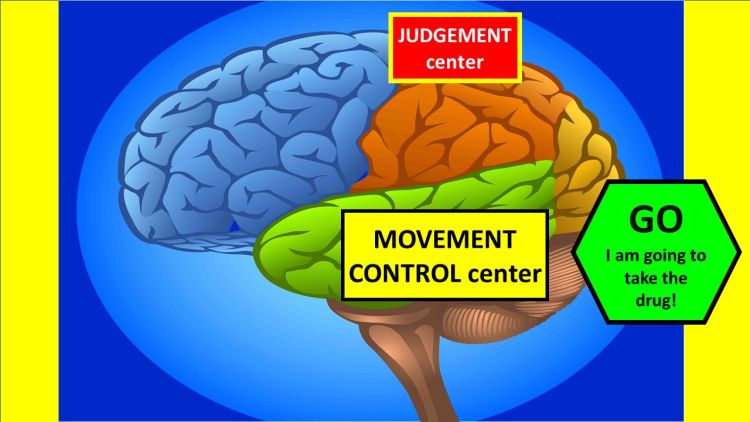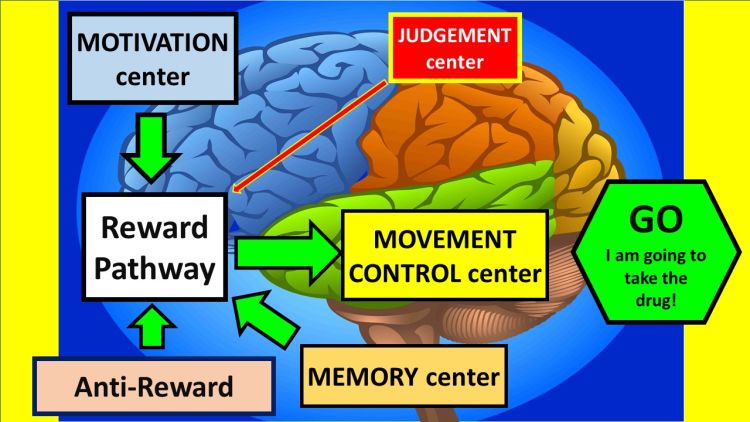OPIOID ADDICTION AND THE BRAIN
This presentation was prepared to help you understand how
OPIOID ADDICTION is a BRAIN CONDITION
and not a moral condition, as some would have you believe.
I want to share with you a way of understanding why treatment works.
I am sure you can handle the truth.
So please take a 'scroll' with me.

Let me introduce you to something addiction experts call the BRAIN ADDICTION SWITCH. You know, something that can be turned ON or OFF. This is a real simple but neat way of describing what goes on (or turns on) with opioid addiction and other types of addiction. Heroin and drugs like fentanyl and oxycontin are opioids. There are biological forces (the stuff you are made of), psychological forces (the workings of your mind), and social forces (the workings of people in your life) that when they come together in a bad way, they can cause a physical change in your brain. We can call that changing nature a BRAIN ADDICTION SWITCH. These biological, psychological, and social forces can flip the addiction brain switch on. With the switch on ON, the addiction condition is then carved in a deep part of the brain and then the condition tends to have a life of its own. (Don't worry, I have a lot to say about the brain later on down and I think you can handle the truth.) What I mean by this is that the addiction condition, after being carved in, acts on its own. The addiction condition acts separately or independent of the very forces that set it in motion or flipped the switch to ON.
One of the forces, BIOLOGICAL, that comes together has to do with your genetics or genes; basically, the things and tendencies you were born with; or what you inherited from your parents. What am I talking about here? If both of your parents are alcoholic, you have seven times the chance of becoming an alcoholic yourself if certain conditions arise for you, compared to a person whose parents are not alcoholic. The same sort of thing happens with opioid addiction. However, I can't quote you the chances; but you get my meaning.
PSYCHOLOGICAL forces can lead a person to self-medicate (treat himself with drugs) his or her psychological problem, without realizing it. A person may have untreated depression or anxiety and self-medicate with a street drug (or something in someone's medicine cabinet) to deal with the problem. Just like a person would take an over-the-counter Tylenol for a headache, a person might take cocaine to treat what turns out to be depression.
And then you have SOCIAL forces like peer pressure that can be a powerful persuader to use drugs of abuse. When everybody else around you, especially during your teenage years, use a particular drug (to have fun), then it is an incredible force for you to use as well. When these genetics, self-medication, and peer pressure forces come together, they change something your brain, they engrave or carve the addiction in a deep part (primitive) of the brain and then the addiction condition takes on a life of its own.
This is not the whole story. There is one more major force to talk about; namely USE. Let's think about this. You have a 16-year-old teenager and let's say that she has not inherited any biological tendencies (genes) for addiction, and her parents do not use drugs, and her grandparents do not use drugs or drink, which means no genetic load or biological force to deal with. Let's say that she doesn't suffer from any psychological conditions or eating disorders, or depression, or anxiety, and no hidden psychological problems that I can think of to force her to self-medicate herself with a drug of abuse like heroin or cocaine. Let's say that this young lady has a peer group (her close friends) that don't do drugs; basically goody-two-shoe type teens. Would it be OK to go up to her and say, "take all the heroin you want because we know you won't get addicted?" Of course, that would be a fool thing to do. Yet, this was the fool thing that drug companies convinced doctors they could do with prescription oxycodone for pain. Boy were they dead wrong. So USE, in and of itself, with the right set of circumstances and amount used over time can turn the brain switch to ON for the addiction brain condition.
OK, just to complete this brain switch conversation, once somebody is addicted and has gotten treatment or been rescued from the addiction trap (also known as being in a state of recovery), there are three major things that can lead to a RELAPSE. One of them is STRESS. Another is simply EXPOSURE (taking the drug). The final one is in the form of TRIGGERS, also known as cues in Alcoholics Anonymous (or Narcotics Anonymous) language, PEOPLE, PLACES and THINGS. The brain keeps a memory of different types of associations. If every time you hear a certain sound that is tied to or associated with something like eating something real good, it is possible that the very sound of that certain sound can cause your mouth to water and make you crave that something. If you quit smoking but remember the smell of smoking, you might crave a cigarette by the very smell of cigarettes on a person.
I am now going to introduce you to some of the workings of the brain that relate to or tie into opioid addiction. I know you can handle this. You don't need to be a doctor or a scientist to understand this stuff. At least, that is what I am aiming for. I wouldn't share this kind of stuff with you if I didn't feel deep down in my bones that this is important.
So let's get started.
People, as well as other animals, tend to participate or engage or involve themselves in behaviors or actions or things that are rewarding, pleasurable, or simply make them feel good. This feel good sensation is captured or registered (kept account of) in the REWARD PATHWAY in a deep (primitive) part of the brain. This pathway or area keeps track of these feelings and reminds us that whatever that was, it made us feel good. This is also called positive reinforcement so that the behavior linked or tied to that good feeling has a good chance of being repeated so we can get more of that good feeling. There are natural things that cause this good feeling or reward and artificial things that cause this good feeling or reward, such as street drugs (and stuff in momma's medicine cabinet).
The illustration shows areas of the brain that are important for SENSATION (how you feel things), MOVEMENT (how you move), JUDGEMENT (how you decide on things), REWARD area (how you feel good), and how this reward area is close to the MEMORY area. Tap play button below if you are not clear on what I am pointing at.
I then put a circle around the REWARD PATHWAY. Again, this is the area that picks up the fact that we like something or it gives us that good feeling.
I prepared a special section for you in case you really want to take a deeper dive into brain function. Again, I think you can handle it. Tap or click on the brain picture for circle spots to show up. Tap or click any of the three circle spots scattered about the brain and YouTube videos will pop up. You can play the videos. But please return once you have had enough of this advanced instruction. You can expand this section if you click on the right thing.

NATURAL REWARDS such as food, water, sex, and nurturing allow people like us to feel pleasure when eating, drinking, procreating (fancy term for having sex), and being nurtured (like a baby being tenderly cared for by the mother). Such pleasurable feelings reinforce or make our desire stronger for the behavior so that it will be repeated. Each of these behaviors is required for the survival of our human race; for our species. As mentioned above, the REWARD PATHWAY in the brain is responsible for rewarding behaviors or our actions.
Heroin is an addictive drug if the right circumstances are put in motion. Think of the BRAIN ADDICTION SWITCH that I talked about earlier. Heroin produces pleasurable feelings and can positively reinforce (make desire for taking the drug stronger) by messing with the reward pathway in the brain, mentioned above. I will say more about this below.
Heroin is changed to morphine after it enters the body. If you ever heard of the Trojan horse, heroin is like a Trojan horse because the morphine hides within the chemical and then breaks lose once it gets into the brain. Morphine settles in areas of the brain that will receive it with open arms. We call these open arms receptors. Shown here is where morphine first makes its presence known in the brain. The little greenish specks are what I am talking about. The orange path starts in the REWARD PATHWAY and makes its way up and beyond. This orange path is the travel plan for morphine.
When a person injects heroin (or morphine), the drug travels quickly to the brain through the blood. Actually, heroin can reach the brain just as quickly if it is smoked. Drug users also snort heroin to avoid problems with needles. In this case, the heroin doesn't reach the brain as quickly as if it were injected or smoked, but it can last longer. In the picture, you see a bunch of little green specks or dots. These are the areas of the brain where morphine travels and settles into the open arms of the receptors (places that can receive the drug and cause something to happen). You can easily see how much area of the brain that is affected by morphine. Wow!
You saw this picture earlier, but now you can see how the areas I circled in red hit by morphine affect areas of the brain that control how you make judgement or decide on things; areas of the brain that control how you move and how you sense things. This means morphine makes you think differently, move differently, and feel differently. On top of that, it taps into your memory banks so you can remember all of that.
DOPAMINE
Dopamine is the chemical that is released from containers in all the areas of the brain I pointed out that morphine hits. The more dopamine that spills out, the greater the effect of the drug. This release depends on the many receptors in the brain.
Dopamine is responsible for that feel-good feeling or the 'high' or 'buzz'.
It really is a wonder that the word DOPE doesn't actually come from the word DOPaminE. You get my point?

Let's do a deeper dive into what is meant by ADDICTION. As you know, I shared a lot of stuff about the brain addiction switch. But what is really switched on? What is switched on is a condition in which a person or even an animal feels suddenly compelled to take the addictive drug. We call this compulsive behavior, because the addict takes the drug even when faced with the possibility that this might bring personal harm or put him or her in a difficult situation (negative consequences). Unfortunately, this harmful compulsive behavior is rewarded by the good feeling or high that comes from all that DOPAMINE that is released in the brain. Because of the pleasure that comes from taking the drug, due to dopamine, the memory banks of a person addicted to opioids take all that in and combine this information with the emotions he or she experienced while taking the drug. This helps increase their desire (reinforce) to do it again. Addiction also is the loss of control in limiting how much of the addictive drug an addicted person takes.
Scientists have figured that the REWARD PATHWAY may play a big part in all the cravings that an addicted person experiences with opioid use on top of the good-feeling reward that comes from taking the drug. Scientists have learned a great deal about the essence of addiction and it is clear that opioid addiction is a disease or disorder of the brain. Just so you know, other drugs work on the brain in a similar way to heroin.
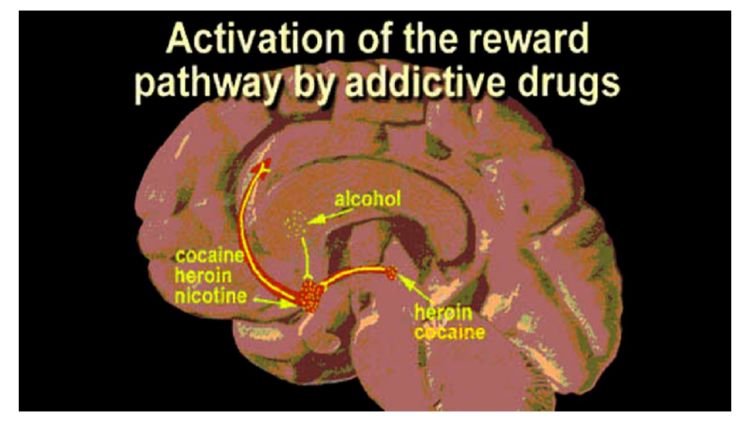
DEPENDENCE is a strange thing with opioid addiction. The more opioid a person takes the more ANTI-REWARD stuff starts kicking in. What I mean by ANTI-REWARD is that the brain is telling you that it has built up a defense against you deciding to quit taking the drug. When a addict, who depends on the drug, quits for a period of time, the withdrawal experience (like a bad case of the FLU) is the result of the brain pumping out all sorts of chemicals that basically says I WILL MAKE YOU PAY IF YOU STOP TAKING THE DRUG! The brain picture shows where the dependence defense or anti-reward pathway kicks in (and kicks an addict's butt). The thought of an ANTI-REWARD butt kicking is what often keeps a person addicted to opioids taking the drug, even if it is not to get much of a high. Taking 'street subs' is another way persons addicted to opioids, who are not in treatment programs, keep from getting sick.
And then there is this thing called TOLERANCE. This means that the more drug a person takes the less it gives him that high, good feeling, or even pain relief. So he has to take more to get the same feeling. Her brain is soaking up the drug and making more space for it to basically do nothing good for her. On top of that, it even makes the ANTI-REWARD situation (you know, the "I will make you real sick if you stop taking the drug" situation) even worse for a person who now depends on the drug to just feel half-way normal.
Signs of Opioid Addiction
When the Brain Addiction Switch is on,
we can't ignore the signs of a brain in trouble.
The 4 C's (lost Control, Craving, Compulsive use, harmful Continued use)
of addiction point to a brain in trouble.
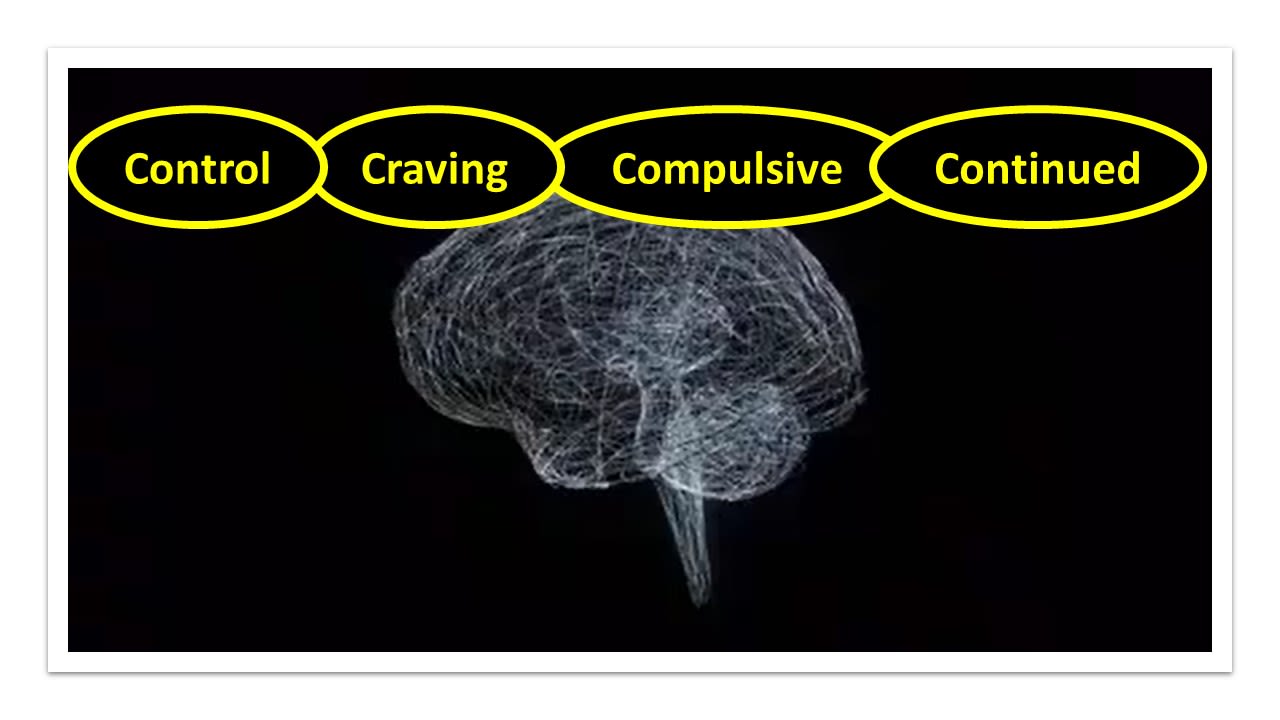
More can be said and seen about opioid withdrawal ('the sickness'). Tap or click on the brain picture for circle spots to show up. Then tap the circle spots for great YouTube stories. Once you have had enough, please return. I have much more to share with you.

STOP - GO
Brain control concept behind addiction,
starting with STOP
(STOP is great!)
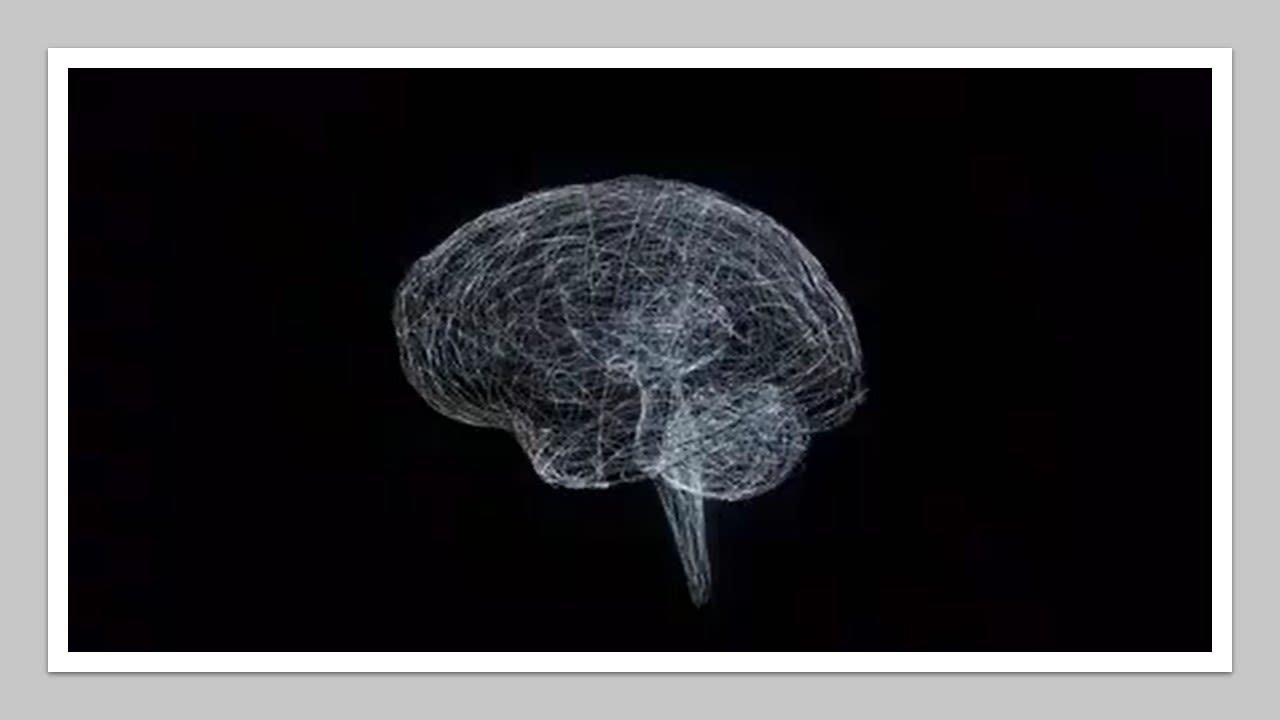
I will now guide you through a way of thinking about the opioid addiction called STOP-GO control over the way our brain controls the addiction or loses control. But first I want you to understand what I am trying to show by the various boxes laying over the brain picture getting larger or smaller. They get bigger when their influence is greater over our actions. When the boxes shrink or get smaller, this means they have less to say or have less influence over our actions. So when you see the size of the JUDGEMENT center box shrink or get smaller, that is not a good thing. When the REWARD PATHWAY box gets bigger, that is not a good thing when it comes to opioid addiction.
If you see the REWARD PATHWAY box shrink, that means that the person has got their stuff together; no cravings; the JUDGEMENT center is dominating! A larger reward pathway box means that it is dominating the JUDGEMENT center and the person is now a slave of the REWARD PATHWAY.
So let's get started by explaining the STOP concept. This is a good thing because it means that this brain has got things under control and addiction is not ruling this person's life.
Control starts with the JUDGEMENT center of the brain. The area goes by a fancy term, prefrontal cortex. Wow! I did it. I laid a true brain term on you. Notice how big the judgement box is. Size does matter!
Now, a person's judgement cannot not be hijacked by the REWARD PATHWAY.
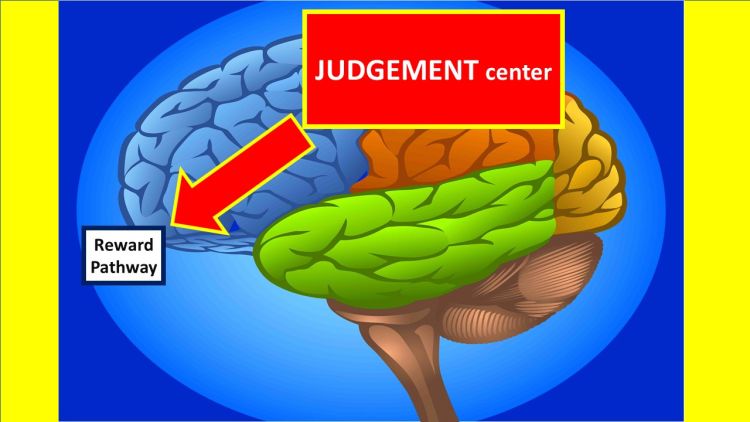
The MEMORY of the reward or feel-good feeling is also kept under control, thanks to the dominating influence of the JUDGEMENT center.
The MOTIVATION center of the brain is also kept in check by the JUDGEMENT center's influence.
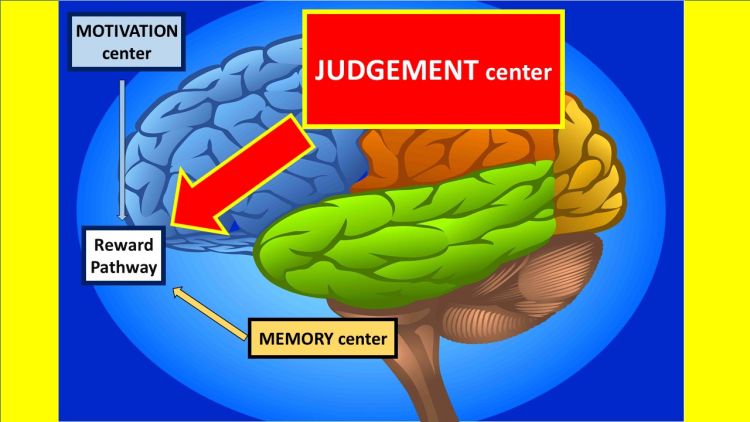
Even the ANTI-REWARD area of the brain is kept in check, which means there is less problem or fear of withdrawal or the sickness.
The MOVEMENT CONTROL center of the brain deals with DOING SOMETHING. The 'doing' could mean going out on the streets to get 'drugs'. It could mean, breaking the piggy bank to buy 'drugs'. MOVEMENT is DOING. Movement is in check, thanks to the JUDGEMENT center. You ain't moving anywhere to get 'drugs'.
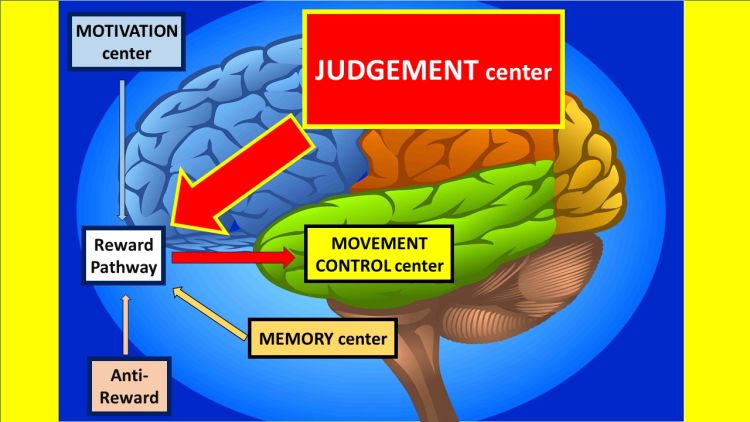
So the bottom line is STOP the MOVEMENT. The JUDGEMENT center has not been hijacked by the REWARD PATHWAY. The JUDGEMENT center (the prefrontal cortex of the brain) is dominating!
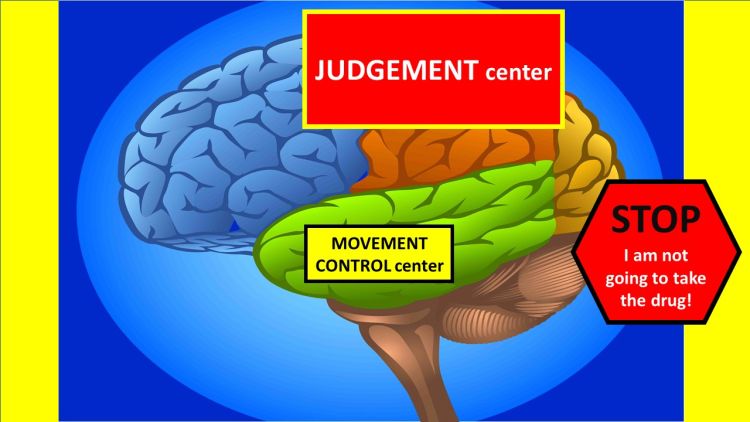
STOP - GO
Brain control concept behind addiction,
ending with GO
(GO is not good)

Now let me explain the 'GO' of the STOP-GO concepts.
You can see in the brain picture that the JUDGEMENT CENTER starts off much smaller than in the brain pictures you saw with STOP. Off the bat, this means that in this situation, it has less influence over what you do.
Don't blame teenagers for having poor judgement. They can't help that their JUDGEMENT CENTER is not fully developed until they are around 21 years old (or there about). They often can't help not making good choices because the more primitive parts (containing their animal instincts) of their brains are oftentimes controlling their actions. They constantly struggle to survive those years despite all those bad choices. You know what I am saying?
So when the JUDGEMENT CENTER has less influence you should be able to guess what part of the brain starts acting like it is the boss. Yelp... the REWARD PATHWAY. And this allows the MOTIVATION CENTER to also have a say in what a person addicted to opioids does. The MOTIVATION CENTER greases the wheels of the REWARD PATHWAY. It provides a person addicted to opioids a power boost to whatever he or she is thinking about doing. You can find out a bit more about MOTIVATION by tapping or clicking on the circle spot on the brain picture below. Tap the brain picture to expose the spot. Please return once you have had enough. I have much more for you.

And don't forget the MEMORY CENTER that is keeping account of all those feel-good feelings and even memory of what it felt like to not take the drug. The ANTI-REWARD center is also built up to the point of being a threat to the addict if she even thinks about stopping the drug. In fact, it is double-daring the person to stop. And the MEMORY CENTER is backing up the ANTI-REWARD center.
So what you can see here is that everything is coming together to push the addict toward MOVEMENT. And that movement is towards TAKING THE DRUG. In this situation, the JUDGEMENT center has been hijacked by the REWARD PATHWAY.
So all signs point to GO. TAKE THE DRUG!
How Opioid Addiction Treatment Works
Simple way of looking at it.

So let's start with the situation where the brain is in a GO state. GO and do what it takes to get the drug!
Again notice that size matters. The JUDGEMENT CENTER is small and the REWARD PATHWAY zone is large along with the large influences of the MOTIVATION CENTER, ANTI-REWARD (I dare you to stop taking the drug or I will make you pay), and the MEMORY CENTER. Oh it's ON!
Now suppose if you can take a drug that silences the REWARD PATHWAY by filling up all those opioid receptors I talked about. You know, those areas with open arms just waiting for heroin or its cousins. That is where drugs like buprenorphine (like Suboxone, Subutex, or Zubsolv) and methadone come in. They fill up those hungry receptors and chill the appetite for opioids. Buprenorphine and methadone are actually opioids themselves, but they don't get all up in the brain like other opioids. However, they do come with a lot of that ANTI-REWARD baggage. For many folks with opioid addiction, this is not necessarily a bad thing. It helps them stay on medication that helps and keep them from taking the bad stuff and in bad ways. At normal doses, these drugs don't get you high. However, like magic they shrink the REWARD PATHWAY and make a person less influenced by the MOTIVATION CENTER. And guess what: the JUDGEMENT CENTER is now allowed to play a bigger role (have more influence) over what a person addicted to opioids does. This person is now able to STOP on her own and not even think about getting the drug. SHE FEELS NORMAL. HE FEELS NORMAL. Their minds are now at peace and they can get along with life and stay on their journeys of RECOVERY & REDISCOVERY of the true joys in life.
Psychiatrists are called 'shrinks' because what they try to do is shrink the influence of the JUDGEMENT CENTER so a person's more natural tendencies (primitive deep brain animal nature) can take over so patients are less held back by their psychological problem (or inhibitions, as they say). However, what addiction specialists and drug abuse counselors try to do is increase the influence of the JUDGEMENT CENTER. NA/AA meetings also help because other folks help you by being an extra set of eyes on you to help you judge yourself and turn this into strengthening your JUDGEMENT CENTER. Others may see little changes in you and if they are not quiet about it, they will let you know and give you a push in the right direction. They kind of become sort of your mirror; another way to see yourself. You do the same for others in your NA/AA meeting. That is why these meetings are called peer supports groups. Everybody supports each other by what they know and probably more importantly what they see in each other over time.
Hopefully you have enjoyed your scroll with me through the brain of addiction.
By now you should have a better sense of why treatment is so important and why it works. If you don't then that just means I have to do a better job next time around.
Click or tap link below to get back to OATH website, if you got here from there.
Opioid Addiction Treatment Help . Info
